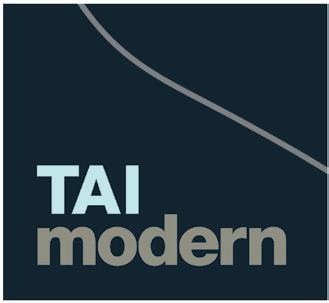FUJINUMA NOBORU









Before I wrote this essay, Fujinuma assured me that he values honesty, and that “if Margo - san feels that Noboru is an eccentric person, she can say so.” He is, and I do. Any adult man who owns and regularly wears a Snoopy tie with matching tiepin should not be defended against accusations of eccentricity.
In a broader sense, though, eccentricity can be considered an expression of individuality and unconventional thinking. These are certainly qualities embodied by both Fujinuma and his work.
Today, at the age of 78, Fujinuma Noboru is one of the most honored and successful bamboo artists. He was the first artist to agree to be represented by what would become TAI Gallery, and his early support was crucial to ensuring a future for the gallery. We are fortunate enough to be having this show together because of two fateful encounters Fujinuma had as a young man.
As a child, Fujinuma was good at drawing and making things. He enjoyed the arts but was also skilled with machines and technology, so he attended a technical high school. After graduation, he got a job with Nikon, the Japanese camera and lens manufacturer. At 27, Fujinuma was a successful young professional with a stable job and bright future when he embarked on a transformative trip to Europe.
Fujinuma was deeply touched by the richness of the cultures he encountered, and the pride people took in their own culture. It made him ask himself, ‘What is my culture? What does it mean to be Japanese?’ After returning home, Fujinuma immersed himself in the study of Japan’s culture and traditions. He felt a drive to create something with his own hands that would make his fellow countrymen feel pride in being Japanese.
However, it was not until his encounter with a book, The Collected Works of Shono Shounsai , that Fujinuma realized that his path forward would be through bamboo art.
“When I saw this, I was astounded at the high level of Japanese bamboo artistry. From the moment I saw such work, I knew what I would do with my life. I was overwhelmed by the feeling that as long as I lived, I would devote myself to continuing this legacy of bamboo art.”
Fujinuma Noboru’s lacquered bamboo cylinders possess a magnetic force, pulling viewers closer and closer as they attempt to decipher just what it is they are seeing. Is it glass? Porcelain? A rare and exotic agate? The color patterns roil and moil like molten lava, with contour lines of color so fine a magnifying glass would be needed to count them. Those who guessed urushi or lacquer are correct, but it is lacquer work done at an almost geological pace. And just like the Grand Canyon, it’s all about layers.
Also like a canyon, it takes a lot of work before the layers become visible. Every December, Fujinuma visits a moso bamboo grove to select culms for his future body of work. During previous trips to the grove, Fujinuma would have noted promising culms growing. While all the bamboo might look pretty similar to you or I, he perceives a range of possibilities, whether it is a close spacing of the nodes perfect for a ladder handle or the graceful curve of a stalk rooted on a slope, growing outward and upward to find the sunlight. Each culm of bamboo is unique, with its own energy and personality.
In contrast to his fine woven baskets, which more purely express his own ideas and sense of beauty, the lacquered bamboo cylinders are Fujinuma’s opportunity to honor and share the beautiful shape of bamboo itself. As he said, “I realized that I could make a work of art by taking a form created by nature itself and applying the urushi technique nurtured in Japanese tradition.”
Once he has selected his bamboo, Fujinuma cuts the timber with a handsaw, and takes it back to his studio where it will dry and cure for the next two to three years. When the bamboo is ready to be worked, Fujinuma sculpts the rough form of the cylinder, cutting and carving into the sides to create a shape that celebrates the bamboo’s individual characteristics.
Fujinuma uses a lacquer primer to cover the raw surface with a base of linen fabric. Next, he mixes pigment with the sap of the urushi tree to create a colored lacquer and brushes it on, around one hundred times, with a day of drying time between each coat. In order to dry, Japanese lacquer requires a humidity of 60 – 80% and a temperature of 70 – 85 degrees, so in - progress works are kept in a specialized cabinet which maintains those conditions. Fujinuma does not necessarily use the same color for each layer. He paints fluidly and sometimes changes colors on different parts of the cylinder so that he can guide the overall appearance and color character of the finished artwork. Of course, chance plays no small part in the outcome.
Once the final layer of lacquer has been applied, the artist begins to undo his previous work, becoming a veritable Colorado River of erosion. He sands down through the layers of lacquer with increasingly fine grades of sandpaper, revealing the various strata of color. Once he is satisfied with the color and pattern of the surface, Fujinuma completes the work by coating his hands in a mixture of vegetable oil and deer horn powder and polishing the cylinder to a glossy sheen that begs to be touched.
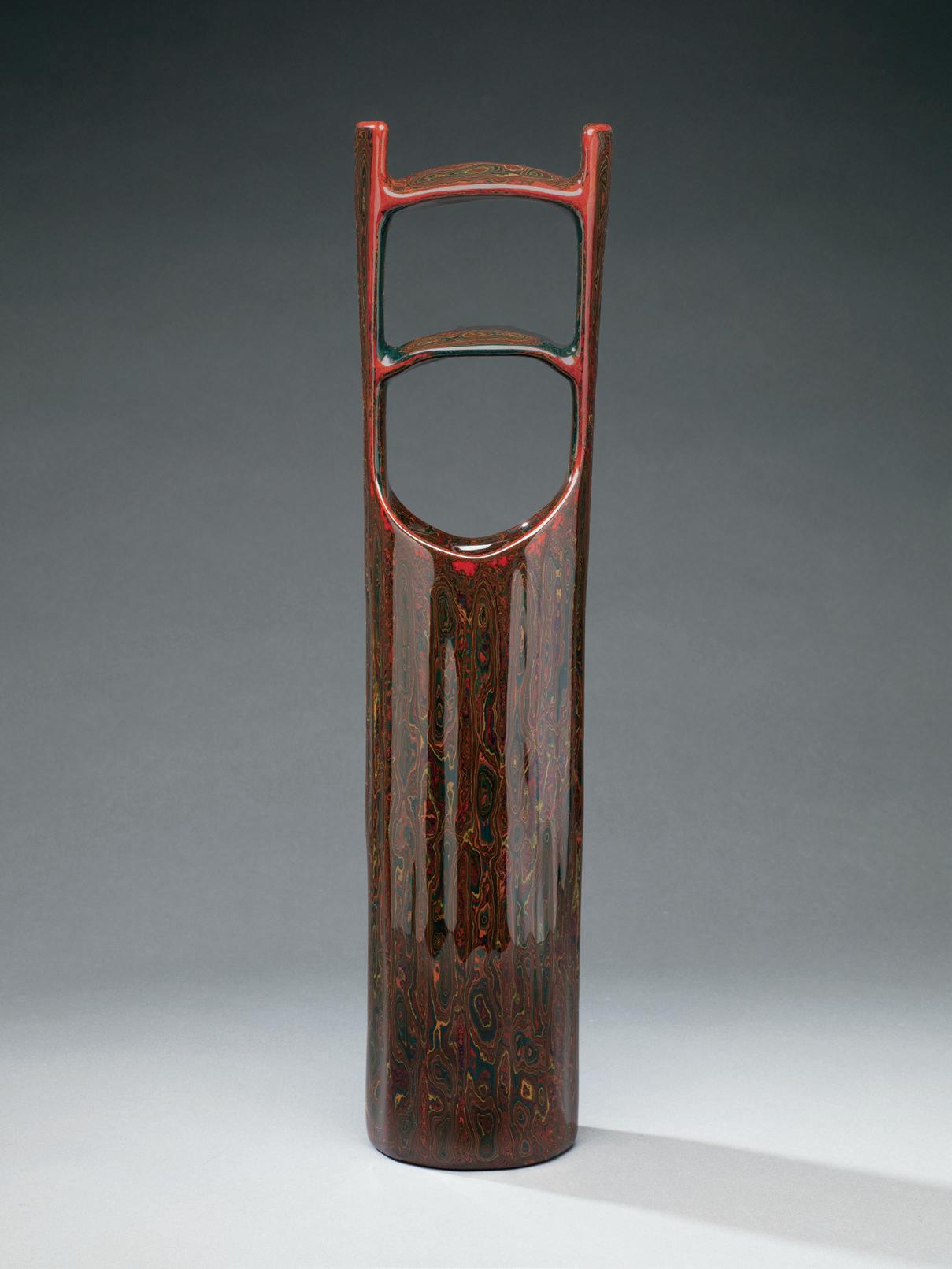 Lacquered Bamboo Cylinder (305 ) , 2021, 26.5 × 6.5 × 5 inches
Lacquered Bamboo Cylinder (305 ) , 2021, 26.5 × 6.5 × 5 inches
Spring Season, 2021, 13.75 × 15.5 × 14.25 inches
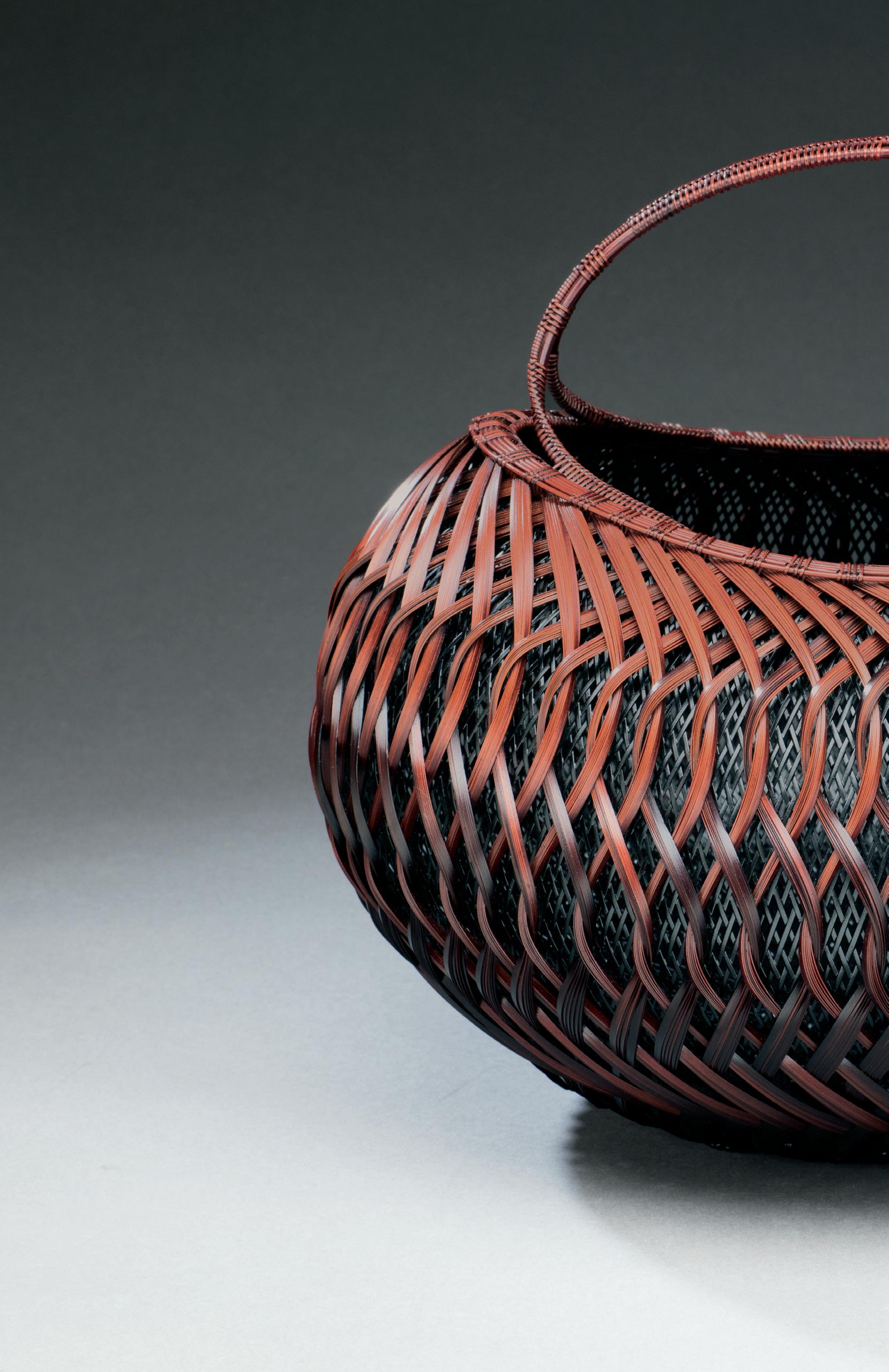
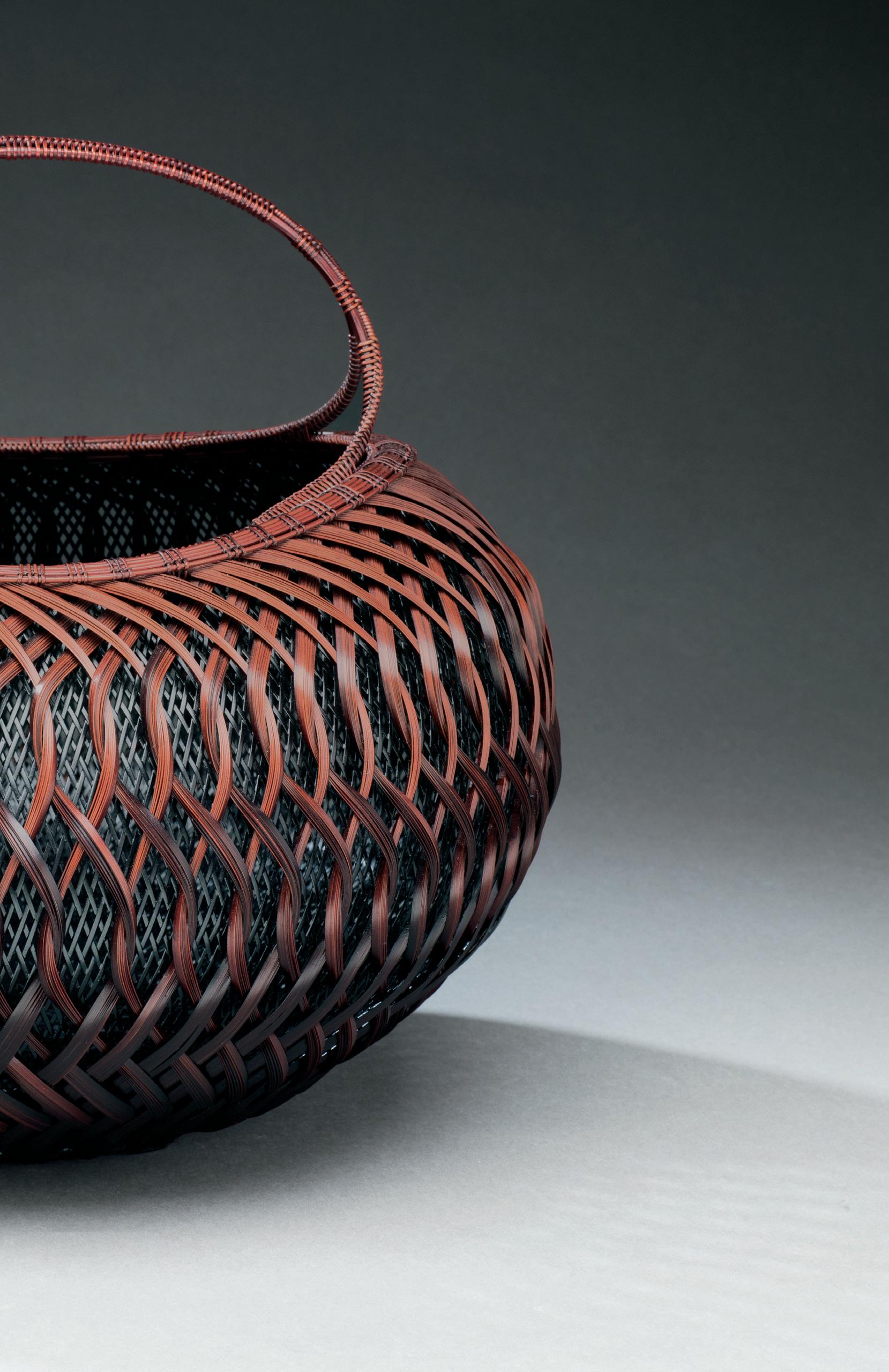
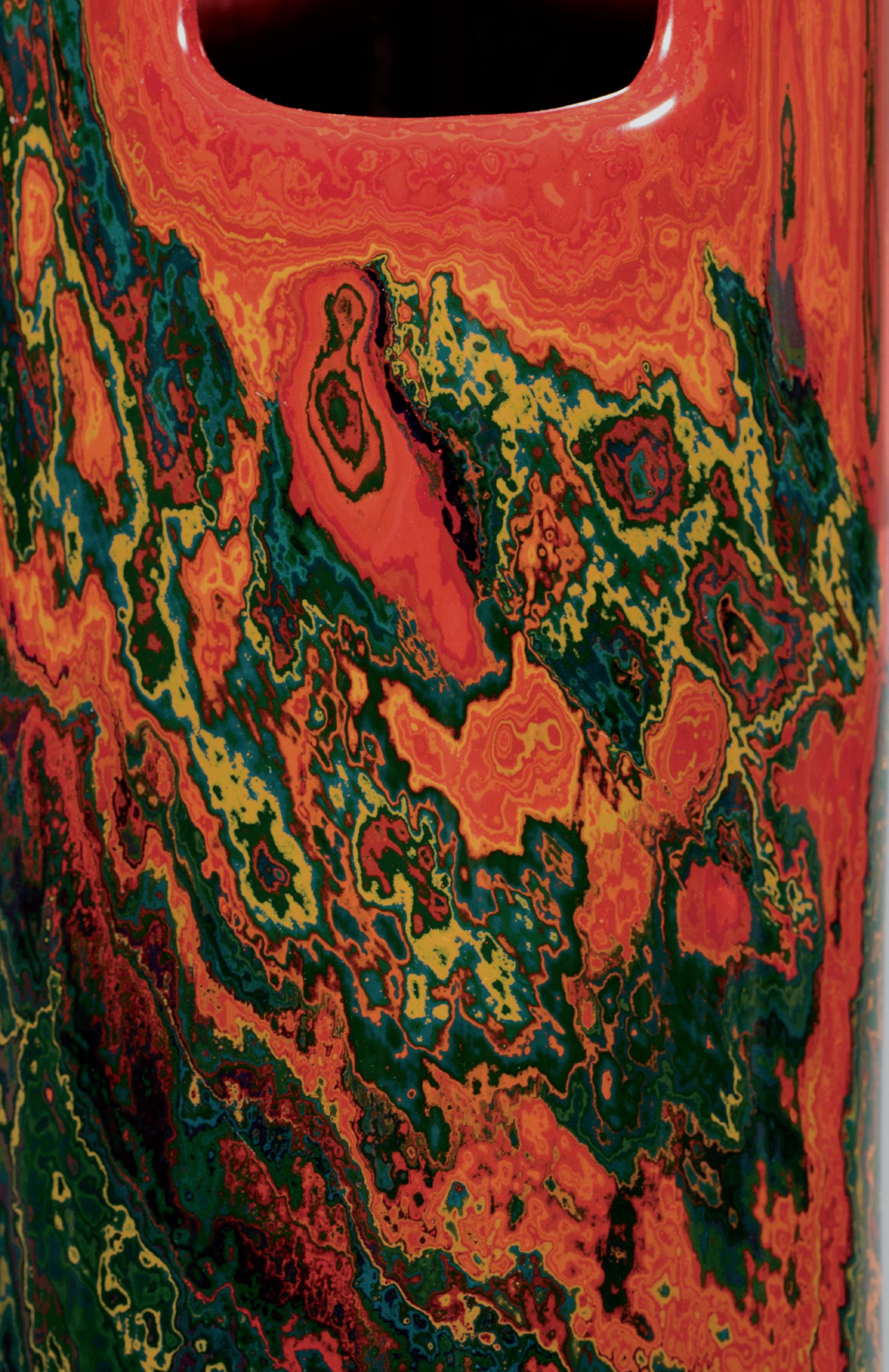
In early winter, when I walk into a bamboo grove and meet a stalk of bamboo that I like, my imagination soars. I cut it down and bring it home. After letting the bamboo dry for three years, I start to work with it, respecting its unique characteristics.
The process of applying about 100 layers of lacquer in seven different colors then polishing the surface to reveal the colors hidden underneath takes a long time and requires patience. For me, nothing can compare to the joy of completing a work of art with the bamboo that I met by chance.
I am grateful for each opportunity to meet a piece of bamboo and to touch and express its character with my hands. I look forward to seeing and experiencing your meeting with the bamboo that I found in the grove.
n Fujinuma NoboruLacquered Bamboo
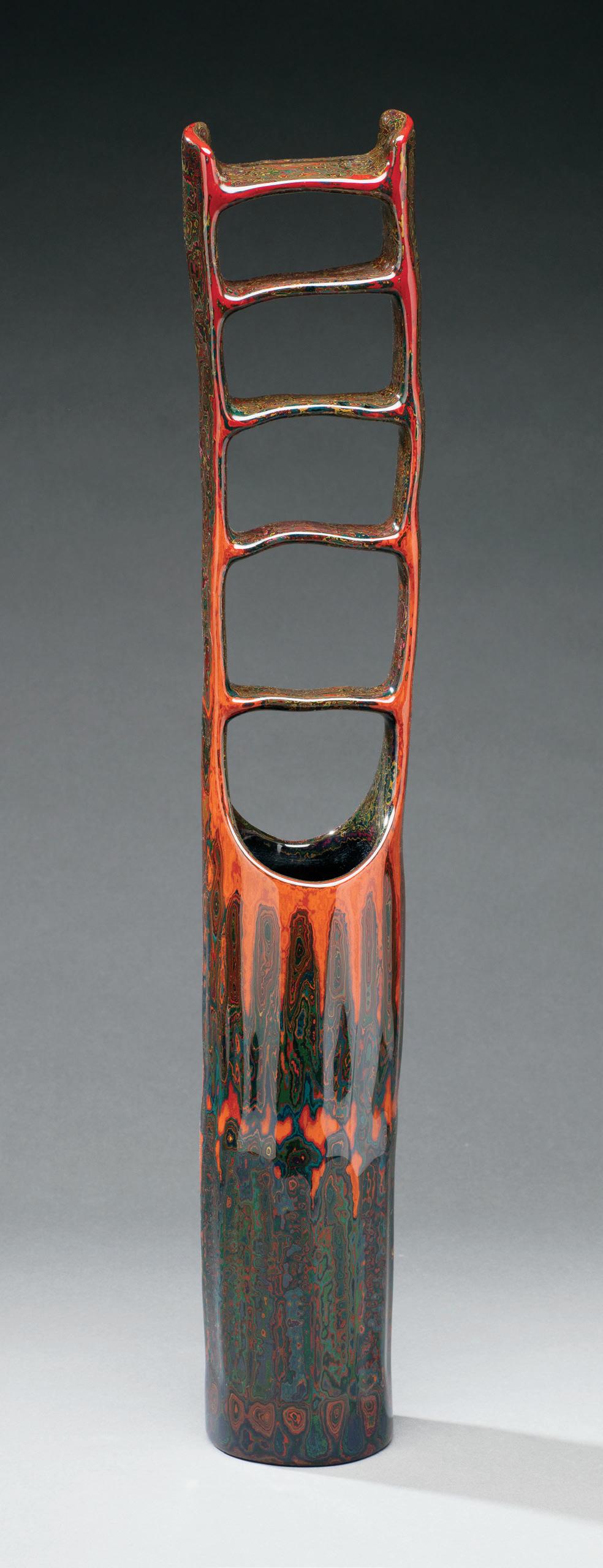
Cylinder (306 ) , 2021
27.75 × 4.75 × 4.25 inches


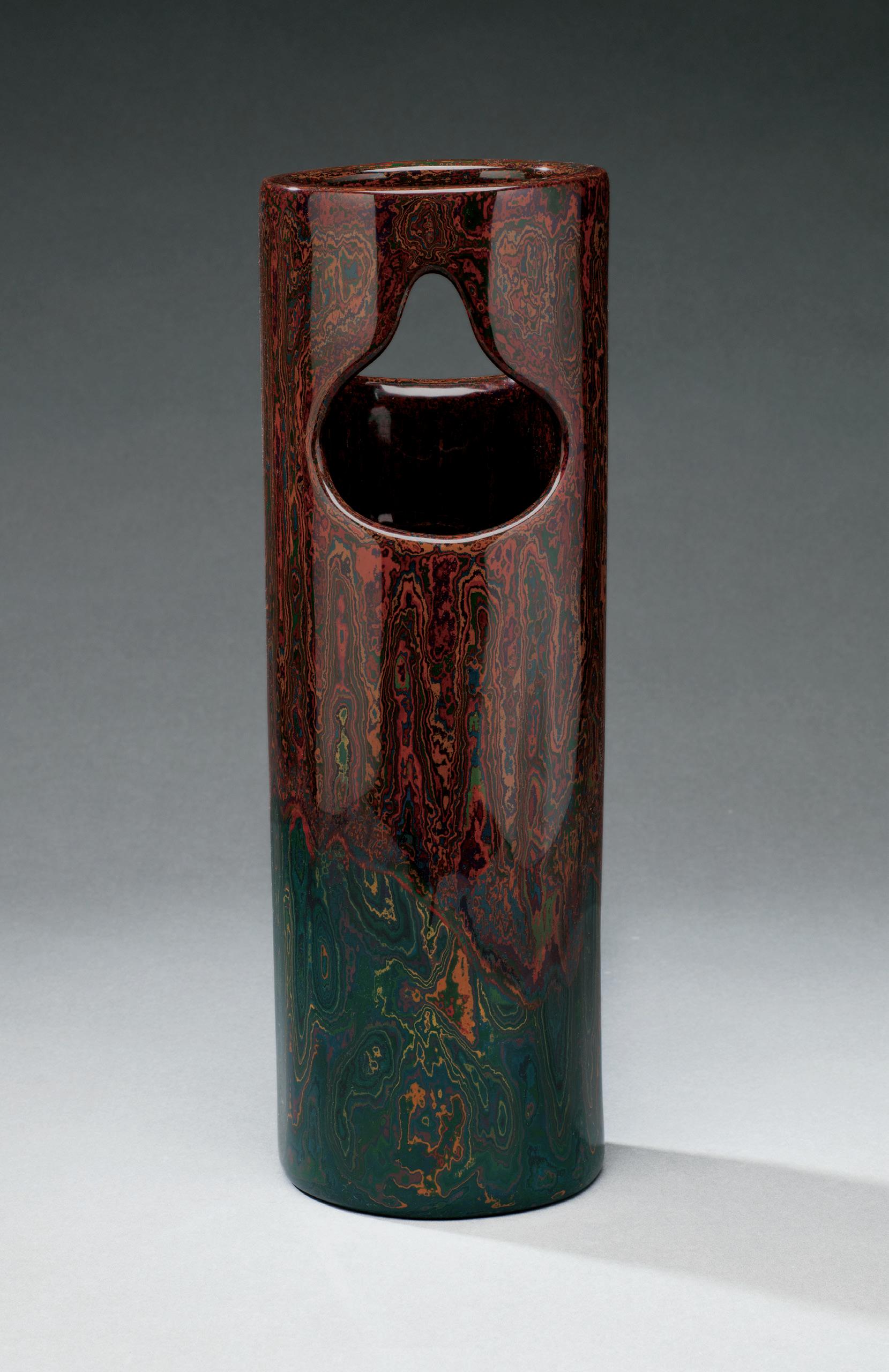
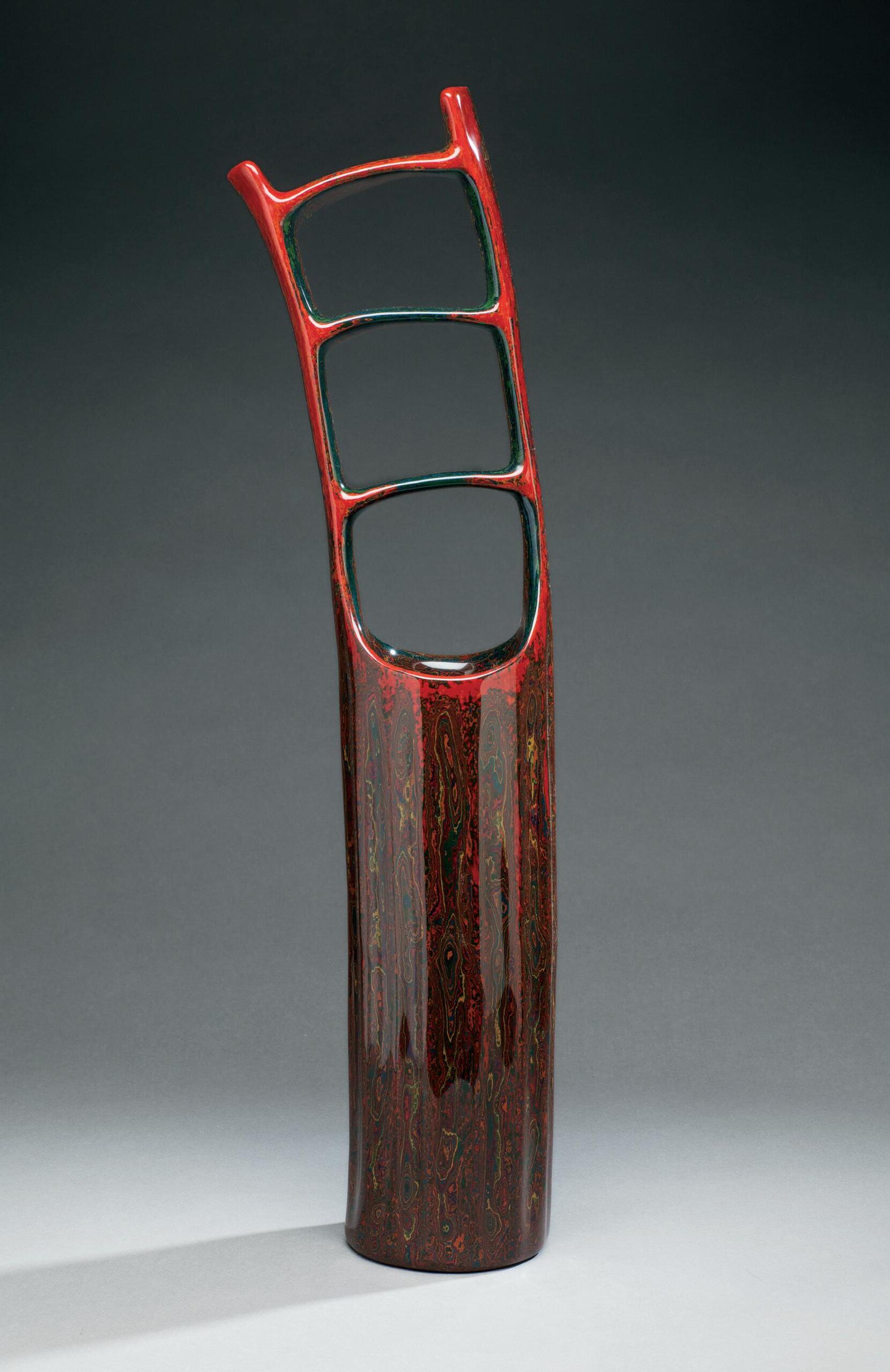

Lacquered Bamboo
Cylinder (315 ) , 2022
24.5 × 4.5 × 3.25 inches
>
Lacquered Bamboo
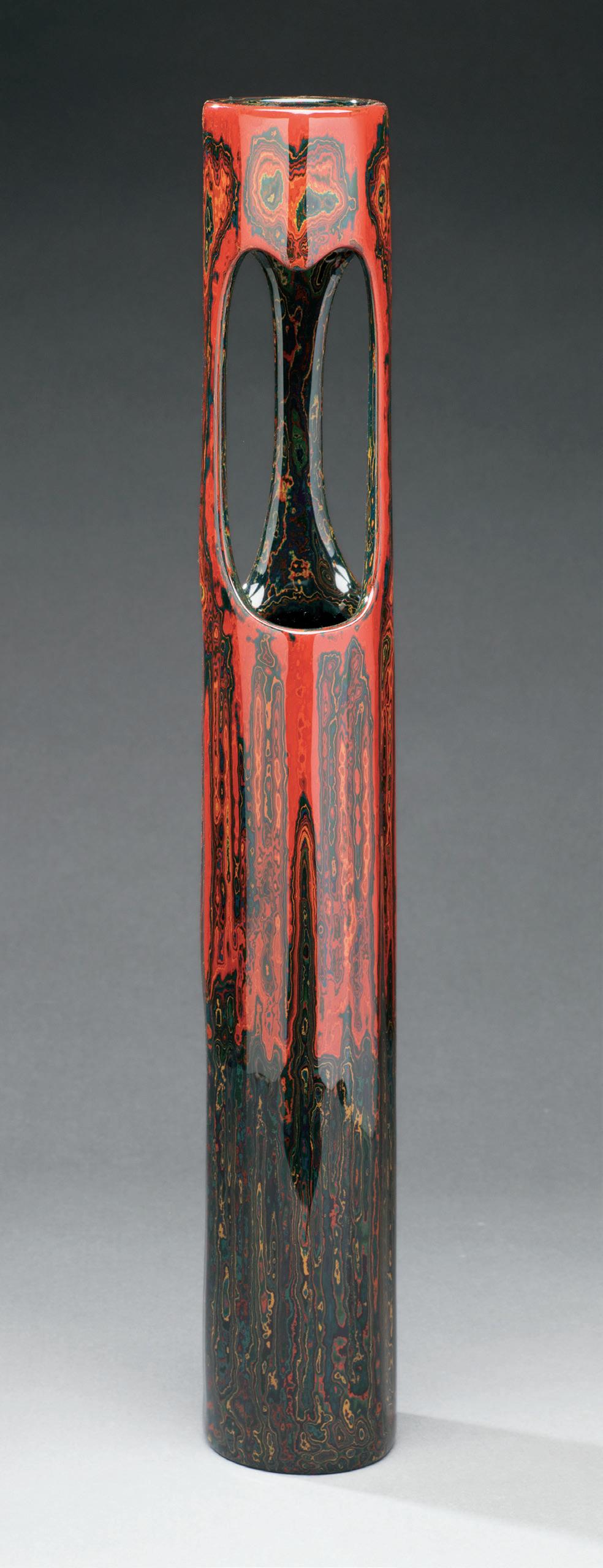
Cylinder (324 ) , 202 0
16.75 × 5.75 × 5 inches



Lacquered Bamboo Cylinder (307 ) , 2020, 15.5 × 6 × 5.5 inches
Lacquered Bamboo Cylinder (323) , 2022, 20.25 × 4.75 × 4 inches >
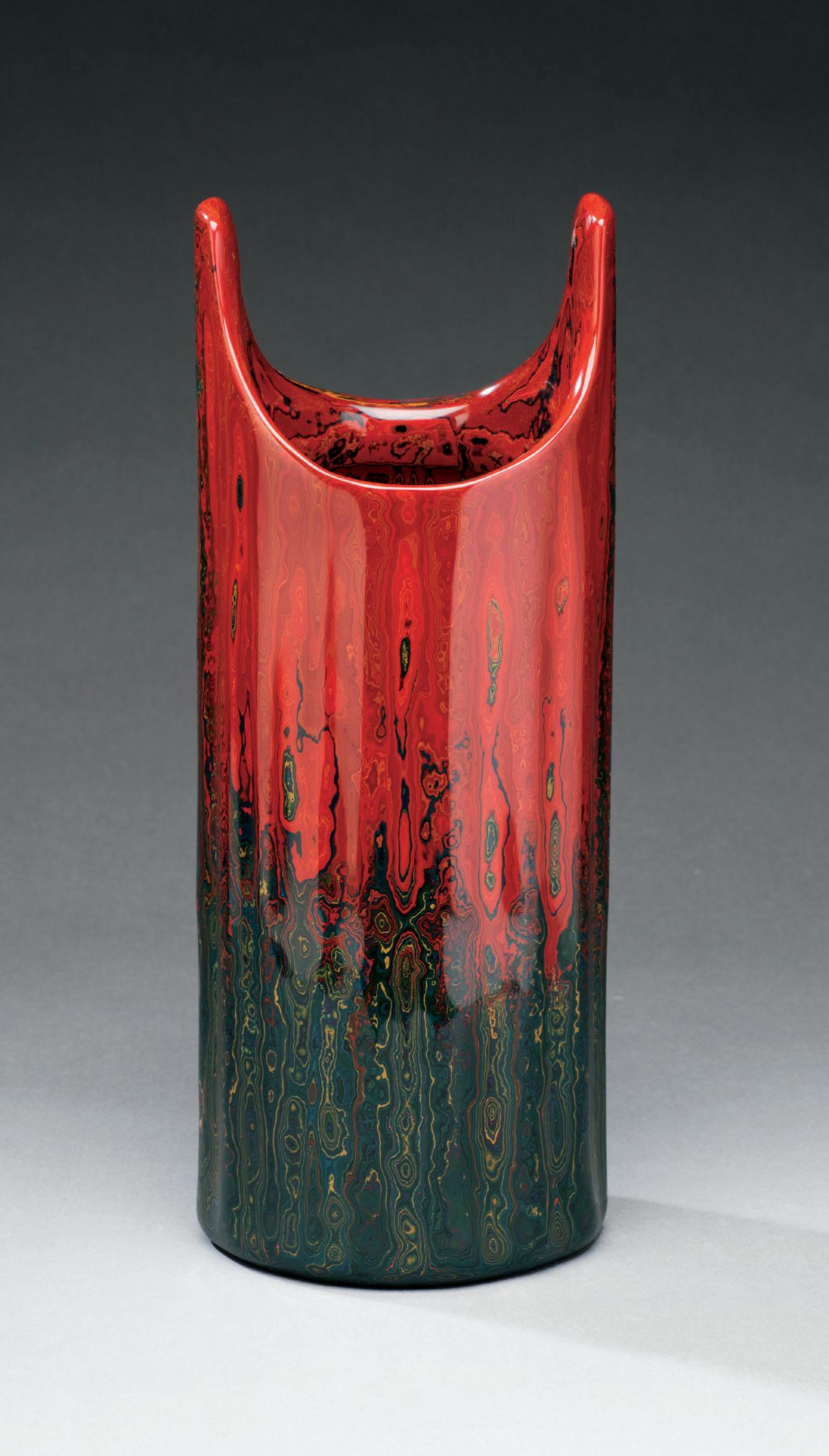

Lacquered Bamboo
Cylinder (313) , 2021
25.25 × 6.5 × 4.25 inches
>
Lacquered Bamboo

Cylinder (311) , 202 0
25.25 × 6.5 × 5 inches
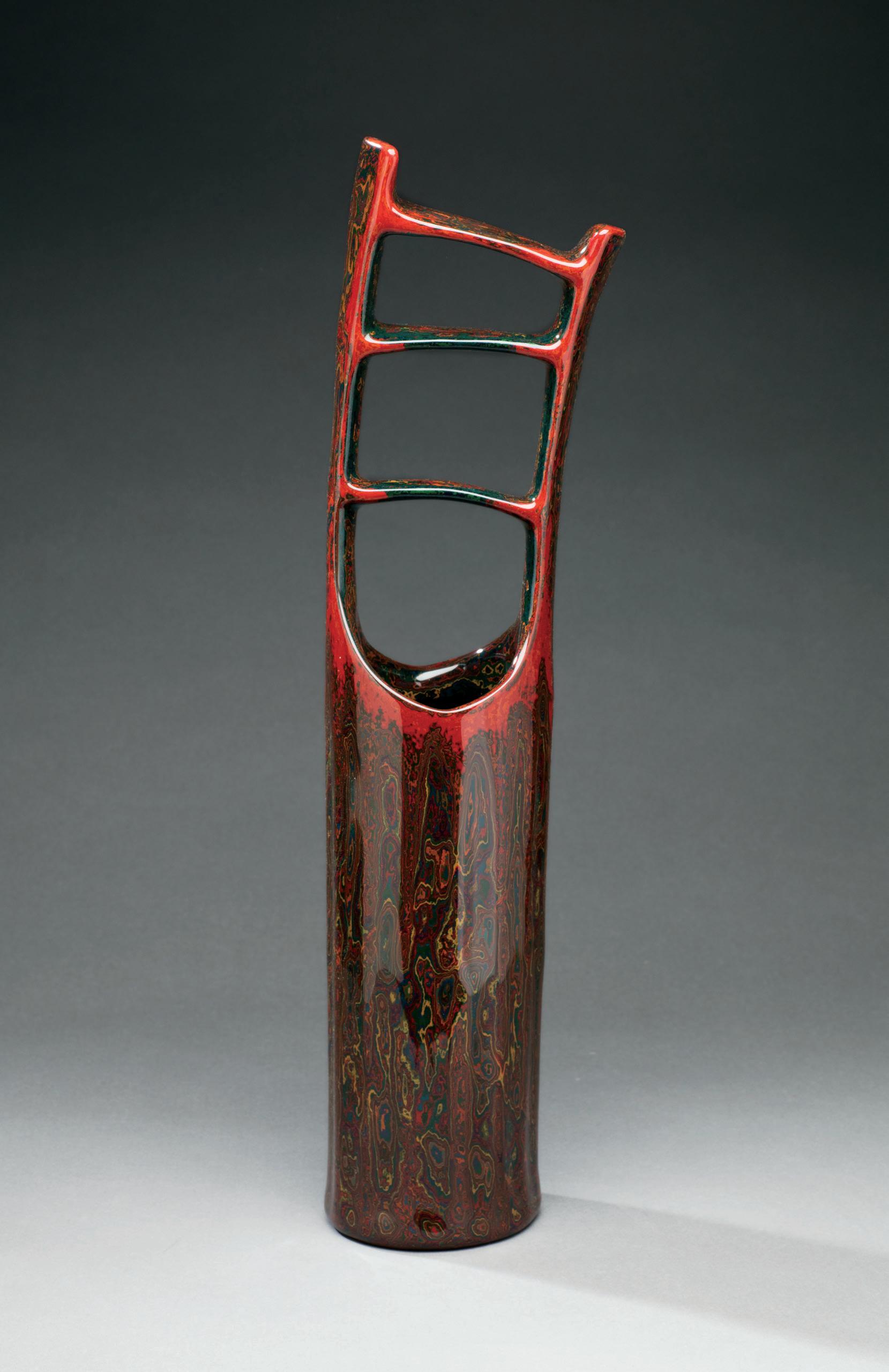

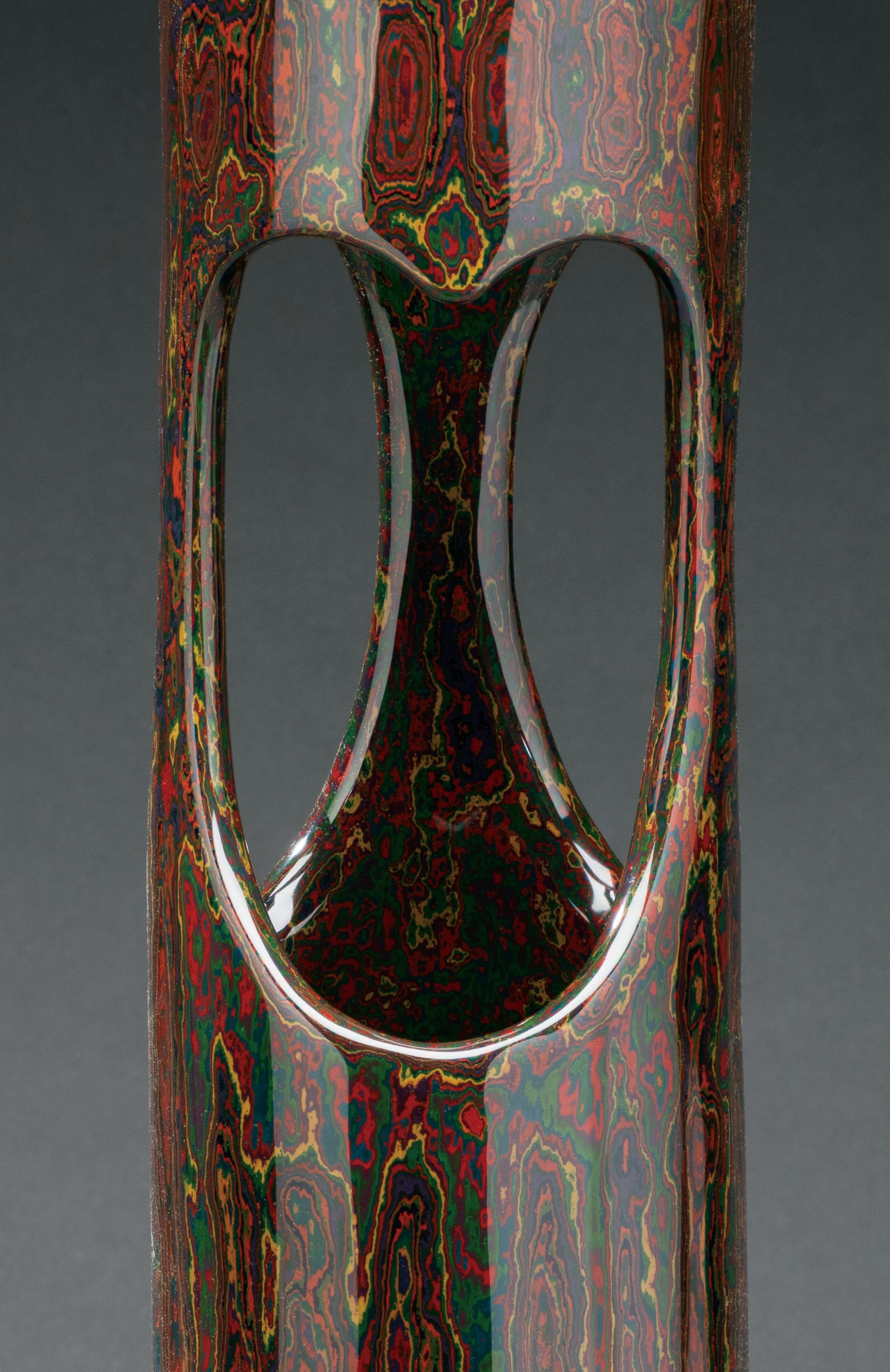

Lacquered Bamboo
Cylinder (314 ) , 2021
25 × 6.5 × 4.25 inches
<
Lacquered Bamboo
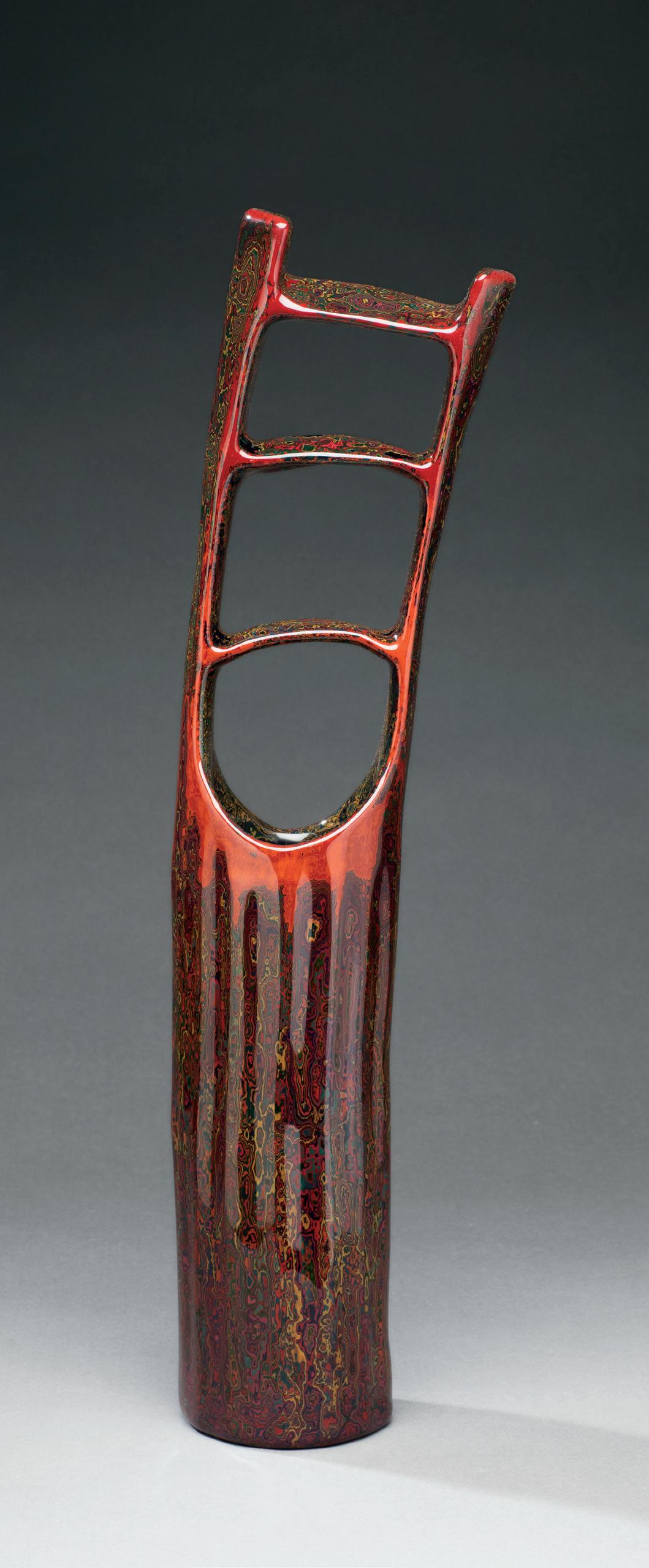
Cylinder (303) , 2021
29 × 6.5 × 5.5 inches
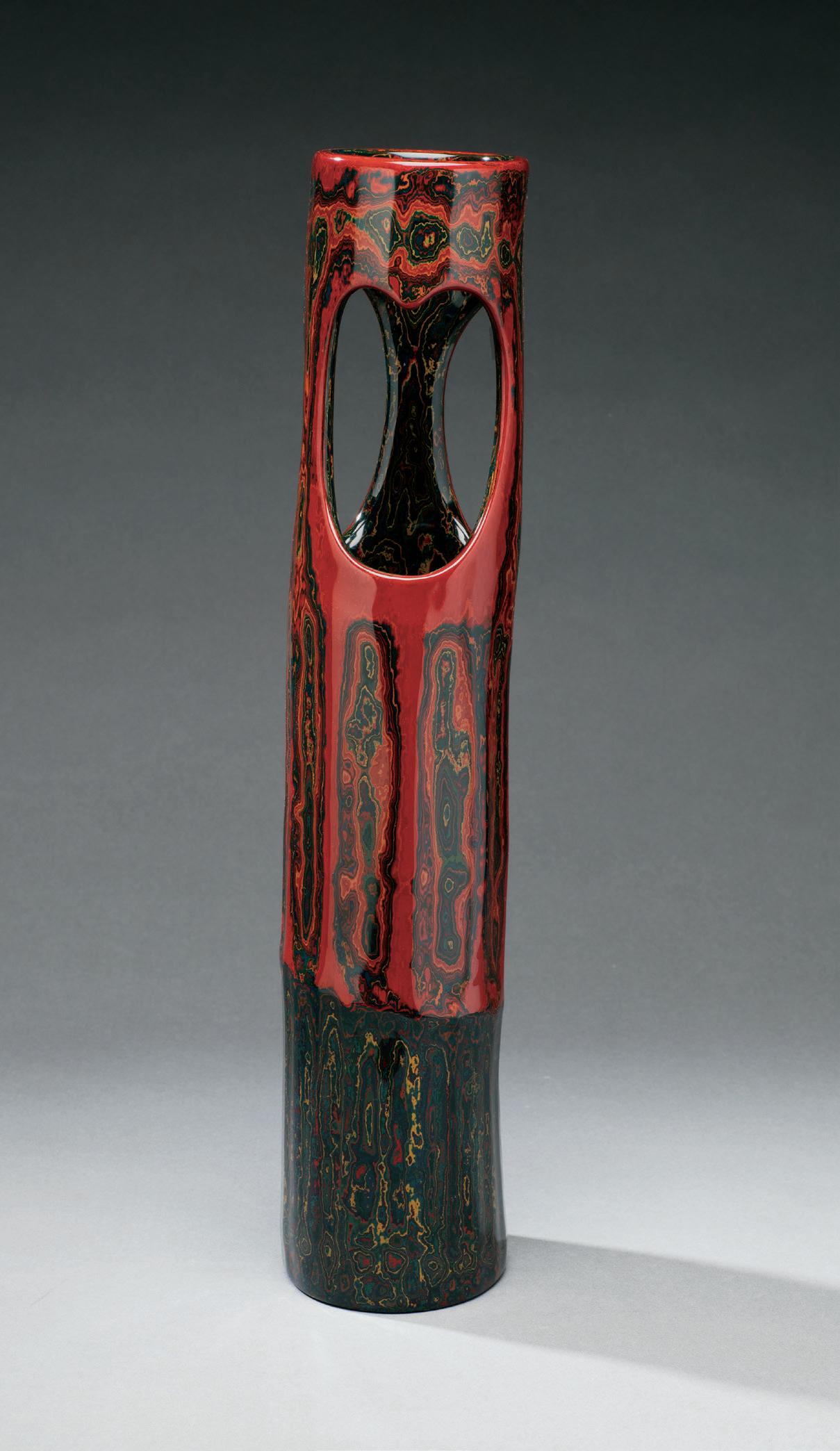
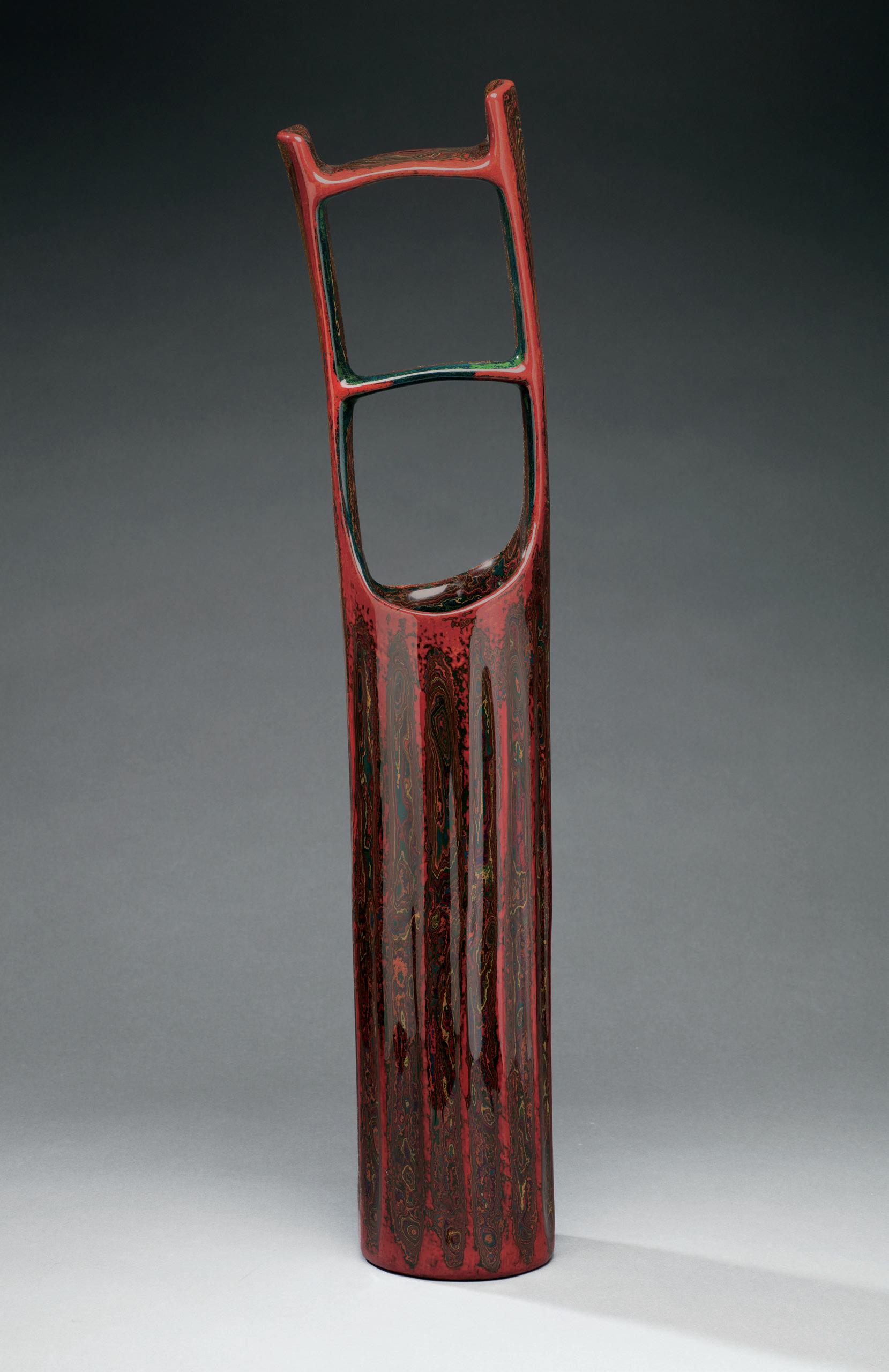
26 × 4.25 × 3.5 inches
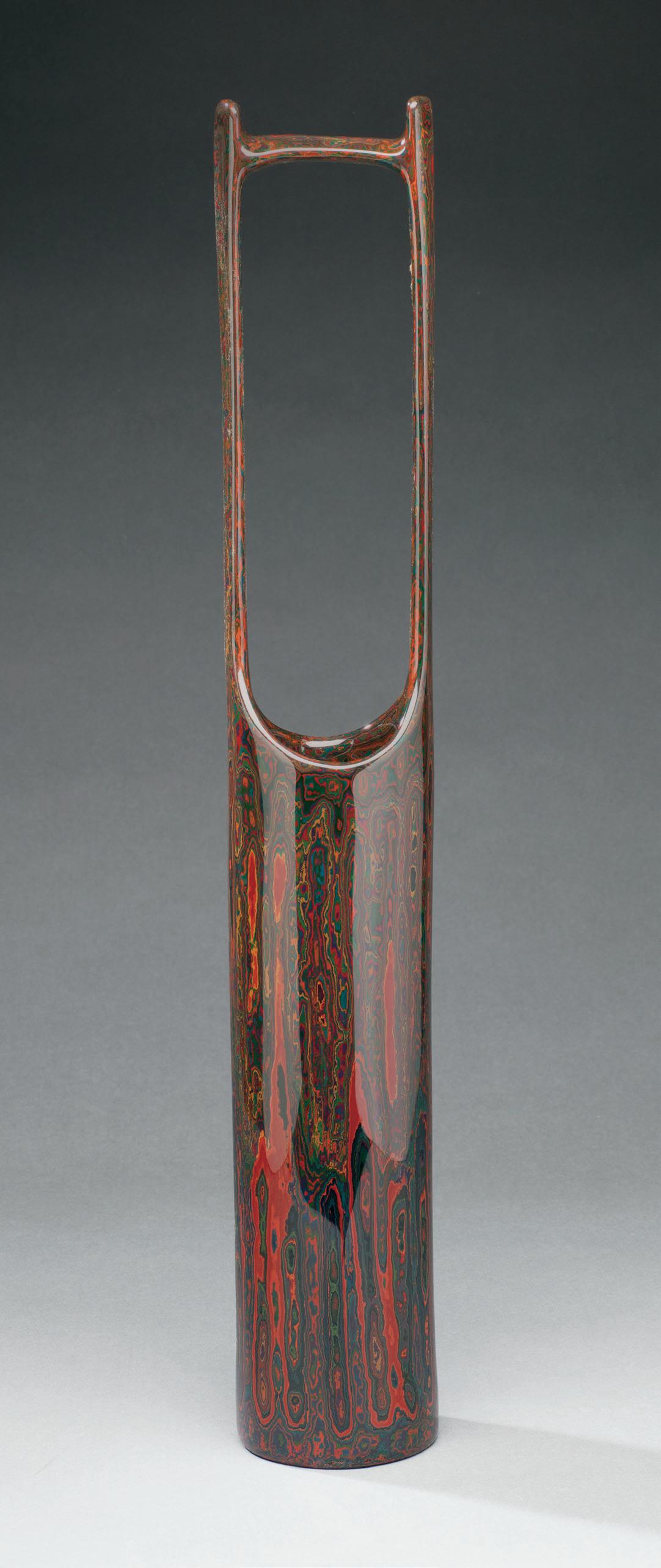
Cylinder (316 ) , 2022
24.5 × 4 × 3.5 inches

Lacquered Bamboo Cylinder (325) , 2020, 17.25 × 5.5 × 4.25 inches
Lacquered Bamboo Cylinder (317 ) , 2022, 22.25 × 4.75 × 4.5 inches >

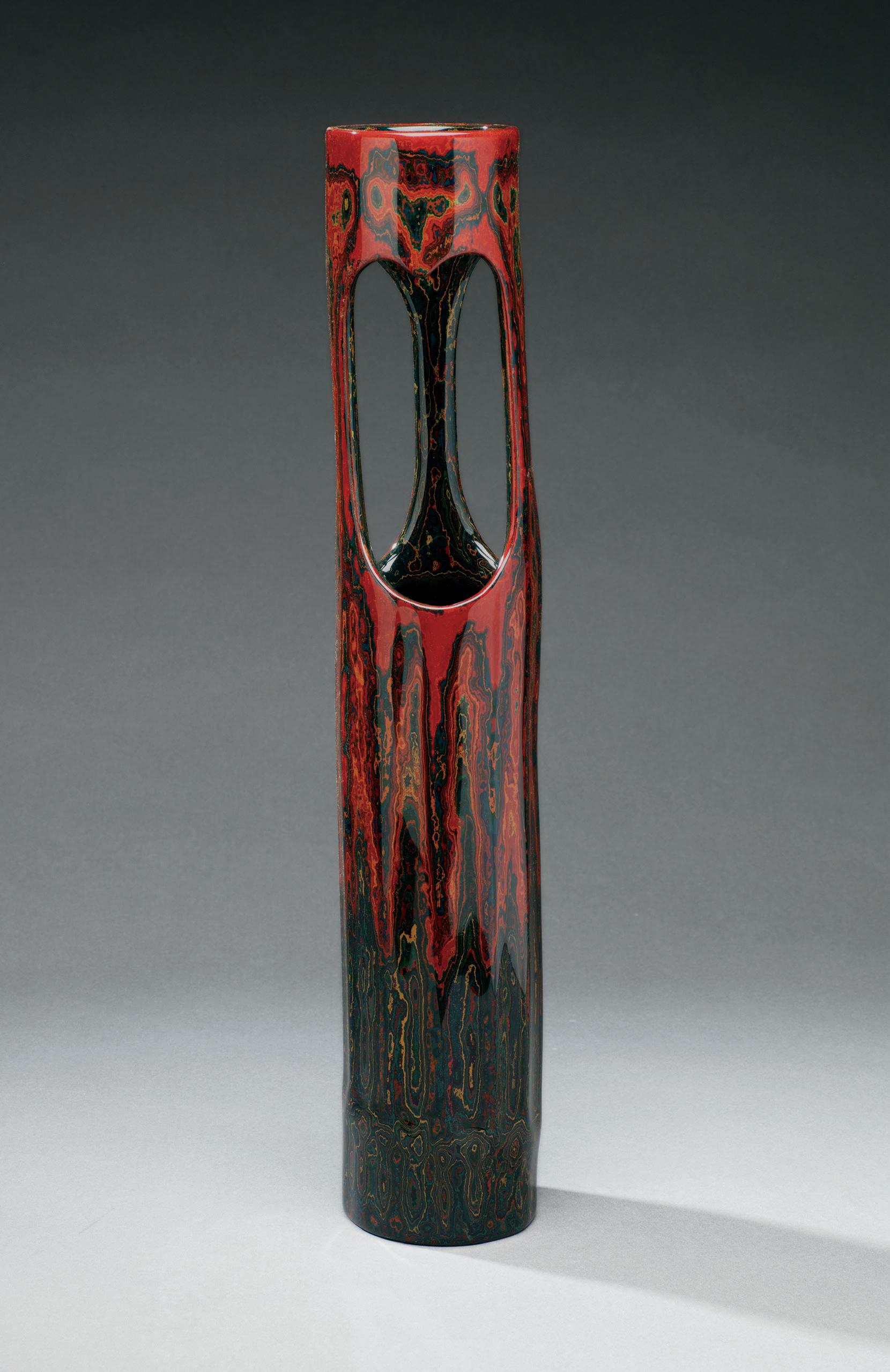

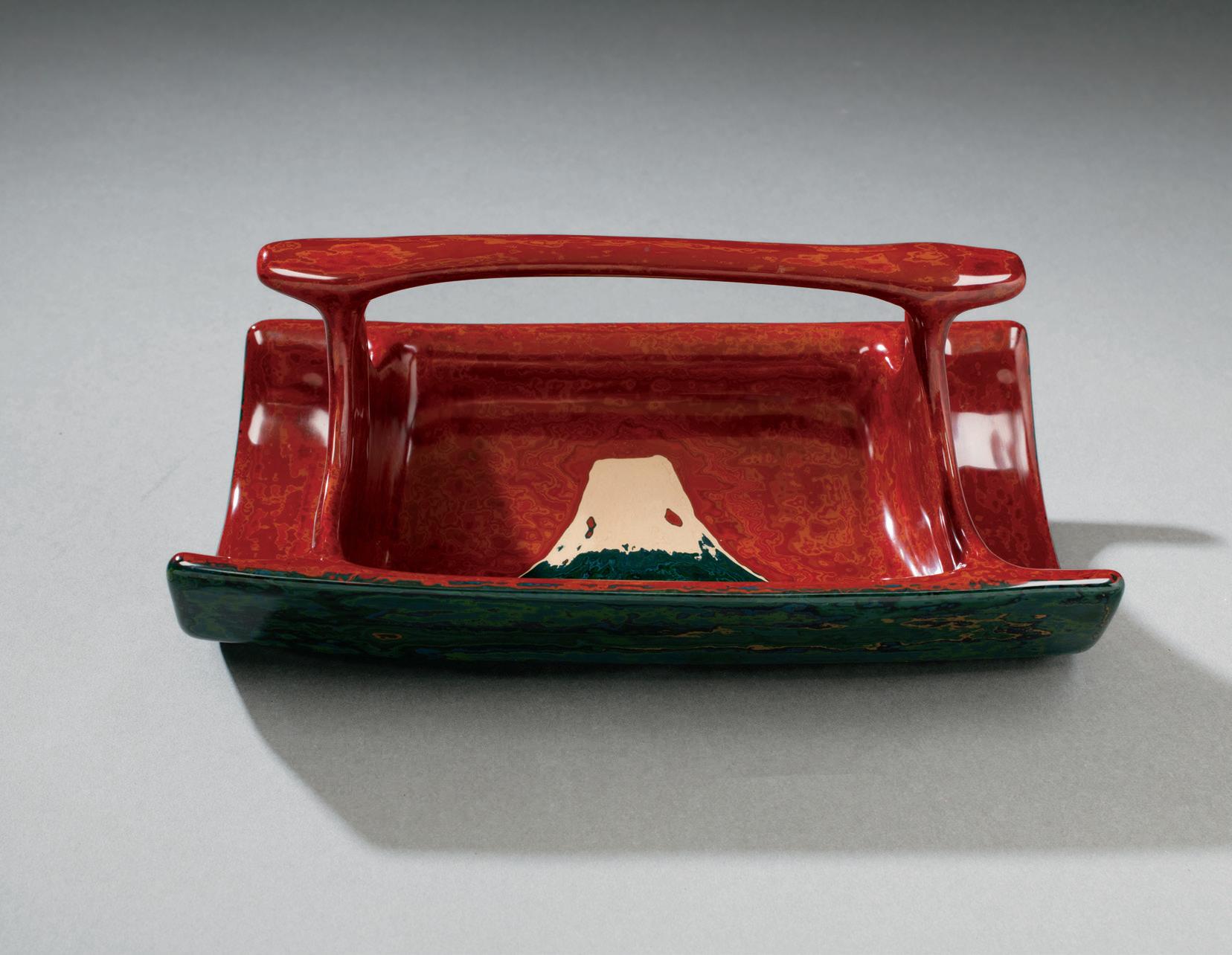 Lacquered Bamboo Tray, 2022, 4.5 × 9.75 × 5.75 inches
Lacquered Bamboo Tray, 2022, 4.5 × 9.75 × 5.75 inches
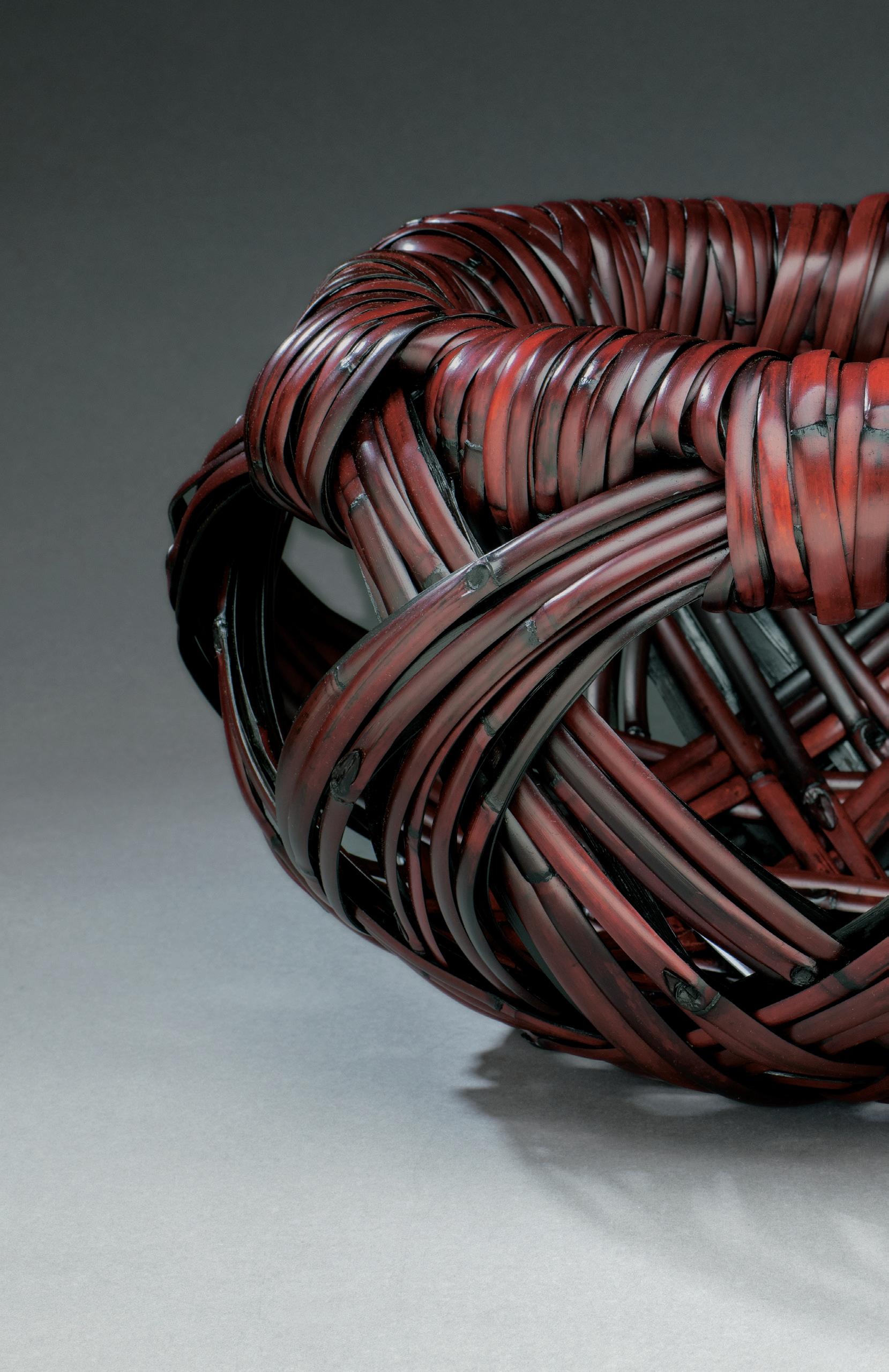

Born 1945, Otawara City, Tochigi
19 76 Apprenticed to Yagisawa Keizo
1977 First Admitted to the Eastern Japan Traditional Kogei Exhibition
1980 First Admitted to the Japan Traditional Kogei Exhibition
1981 Art Festival Award, Tochigi Prefectural Art Festival
1982 Solo exhibition, Utsunomiya Ueno Department Store, Utsunomiya
1984 Became a full member of Japan Kogei Association
1985 Solo Exhibition, Kichijoji, Tokyo
1986 Chairman’s Prize, 33rd Japan Traditional Kogei Exhibition
Tokyo Division Award, 26 th Eastern Japan Traditional Kogei Exhibition
1990 Encouragement Award, 30 th Eastern Japan Traditional Kogei Exhibition
1992 Tokyo Governor’s Prize, 39 th Japan Traditional Kogei Exhibition
1999 Bamboo Masterworks , Asia Society, New York, NY
2000 Finalist, Cotsen Bamboo Prize
2001 Solo exhibition, Mitsukoshi Nihonbashi, Tokyo
2002 The Next Generation , University of Arkansas, Fayetteville, AR
Solo exhibition, TAI Gallery, Santa Fe, NM
2003 Three Views of Bamboo: Fujinuma, Nagakura, Shono, Kansas City Jewish Museum, Overland Park, KS
2004 Bamboo in Japan , Morikami Museum and Japanese Gardens, Delray Beach, FL
2005 Awarded the “Purple Ribbon” by the Japanese Congress for lifetime achievement in the arts, presented by the Emperor of Japan
Solo show, Japanese American Cultural & Community Center, Los Angeles, CA
Weavers of Wonder , Naples Museum of Art, FL
2006 Hin – The Quiet Beauty of Japanese Art , Grinnell College, IA
Group exhibition, Museum of Fine Arts, Boston, MA
2007 Listening to Bamboo: Japanese Baskets from the Collection of Ritalou & Robert Harris, Herbert F. Johnson Museum of Art, Ithaca, NY
2009 Form Follows Function or Does It? , University of Arkansas, Little Rock
2011 Fujinuma Noboru: Master of Bamboo , Art Institute of Chicago, IL
2012 Named a Living National Treasure
Modern Twist , Bellevue Arts Museum, WA (traveled to 12 other venues)
2013 Solo exhibition, TAI Gallery, Santa Fe, NM
2014 Masterpieces of Bamboo Art in Tochigi, Tochigi Prefectural Museum of Fine Arts, Utsunomiya
2015 Received the Order of the Rising Sun, one of the highest honors bestowed by the government of Japan
2016 Discovering Japanese Bamboo Art: The Rusty & Ann Harrison Collection, Herron School of Art & Design, Indianapolis, IN
2017 Japanese Bamboo Art: The Abbey Collection , Metropolitan Museum of Art, New York, NY
Tewaza no Bi: Bamboo Baskets from the Collection of Peter Shinbach , Portland Japanese Gardens, OR
2018 Fendre L’Air: Art of Bamboo in Japan , Musee du Quai Branly
Jacques Chirac, Paris
Japon Japonismes: Objects Inspires,1867 – 2018, Musee des Arts Decoratifs, Paris
2019 Japanese Bamboo Art from New York: The Abbey Collection , Oita Prefectural Art Museum, Oita City (traveled to National Museum of Modern Art, Tokyo & Museum of Oriental Ceramics, Osaka)
Decorative Arts in Meiji and Heisei: Crafting Beauty and Technique
Across 150 Years, Museum of Modern Greek Culture, Athens, Greece
2020 Kogei 2020 – The Art of Crafting Beauty from Nature , Tokyo National Museum
Masterpieces of Bamboo Art: Katsushiro Soho and Fujinuma Noboru, Tochigi Prefectural Museum of Fine Arts, Utsunomiya
2022 12 Stone Garden , Homo Faber, Fondazione Giorgio Cini, Venice, Italy
Art Institute of Chicago, IL
Metropolitan Museum of Art, New York, NY
Philadelphia Museum of Art, PA
British Museum, London
National Museum of Modern Art, Tokyo
Museum of Fine Arts Boston, MA
Denver Art Museum, CO
Asian Art Museum, San Francisco, CA
Minneapolis Institute of Art, MN
Eskenazi Museum of Art at Indiana
University, Bloomington, IN
MOA Museum of Art, Atami

